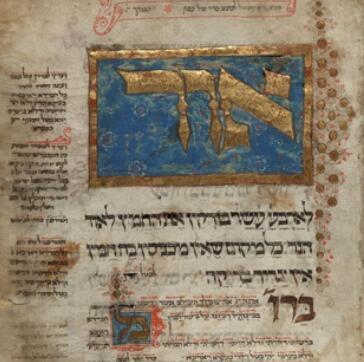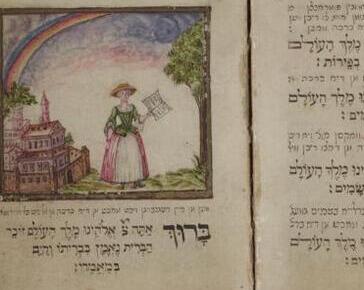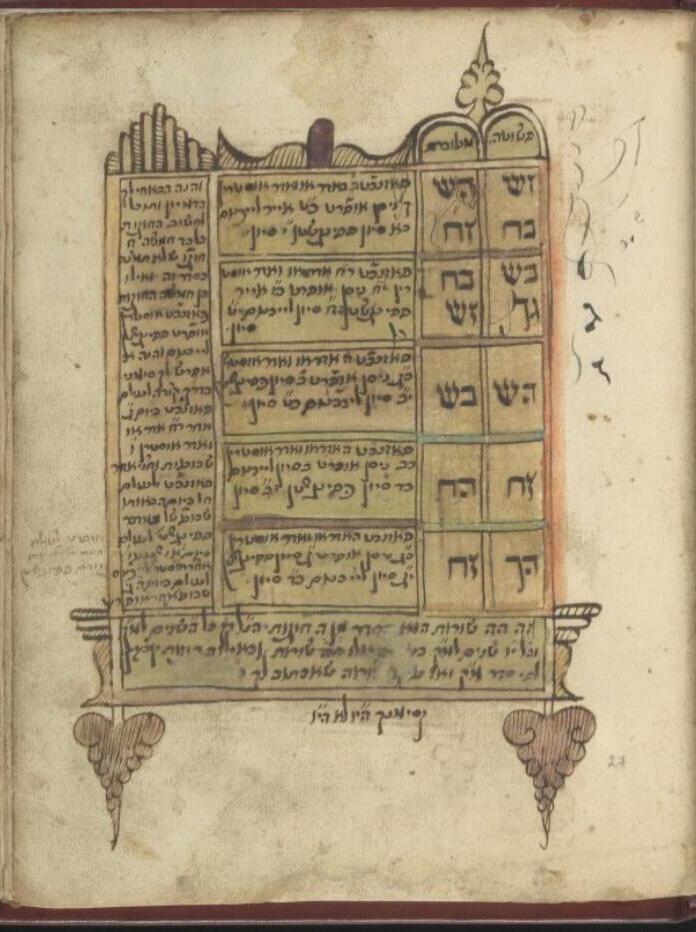The Library of Congress in Washington DC has, for the first time, granted visitors from around the world online access to its collection of manuscripts in Hebrew and related languages such as Yiddish, Arabic-Hebrew and Persian. The 230 newly digitized manuscripts were made available online in August for the first time for researchers and the general public.
More stories:
Noteworthy among these treasures is a previously unpublished chapter from the redaction of “Shemoneh She’arim” (Eight Gates) by Rabbi Hayyim Vital, the foremost disciple of Isaac Luria of Makoveli Ha'ARI from Safed; a rare miniature 4 cm Seder Kriyat Shema (or order of prayers before going to sleep) from Germany, 1745; an 1896 Ketubah (marriage contract) from Italy, revealing striking continuities in customs over time; Rashba's (Rabbi Shlomo ibn Aderet) 14th-century Fabriano paper responsa, considered among the rarest of its kind; and the renowned "Washington Haggadah" crafted in 1478 by Joel ben Simeon, a Hebrew scribe celebrated as "one of the greatest Jewish artists of the time." The collection also includes unpublished poems by Solomon Da Piera, one of the last of the great Hebrew poets of Spain.
3 View gallery


A page from the Washington Haggadah,created in 1478 by Joel ben Simeon, a Hebrew scribe working in both Italy and Germany
(Photo: From Library of Congress website)
The manuscripts in the library's Hebrew manuscripts collection span from the 11th century to the 20th century, offering a comprehensive view of Jewish heritage throughout the millennia. This time span encompasses manuscripts from virtually every century and corner of the Jewish world.
One of the latest additions to this diverse collection is also its most ancient. It comprises a fragment from a Torah scroll dating to the late 10th or 11th century, likely authored in Egypt. This fragment contains the oldest known text of the biblical Song of the Sea, arranged in accordance with ancient scribal tradition. Currently undergoing conservation treatment, this artifact has not yet been digitized. The most recent manuscripts take us into the 20th century, with two unpublished works, for example, by the Russian-born Rabbi Menachem Mendel Risikoff (1866-1960), who immigrated to the United States in 1906.
In addition to these manuscripts, the collection includes documents related to Jewish folk medicine and magic, as well as two manuscripts discussing Jewish music in the Ottoman Empire, among many others.
This digitalization initiative was made possible with financial support of $50,000 from the David Berg Foundation. While these digitized manuscripts may not harbor groundbreaking revelations, they serve as windows into the multifaceted tapestry of Jewish history, showcasing diverse practices across different eras and geographic regions.
3 View gallery


The 18th-century “Order of Prayers before Retiring at Night”, a Hebrew miniature created in Mainz, Germany, in or around 1745
(Photo: Website of the Library of Congress)
Born out of the challenges posed by the coronavirus pandemic and the imperative to make research materials available remotely, this endeavor is meant to represent a stride in the preservation and dissemination of cultural heritage, according to the library. Digitization efforts go beyond mere accessibility; they serve as a safeguard for these delicate manuscripts, protecting them from further deterioration.
A dedicated team, expertly trained in manuscript handling, executed the digitization process in the library's Scan Lab, ensuring that these documents remain preserved for future generations. Unlike previous digitization projects that relied on volunteer efforts and rudimentary technology, this initiative employed high-resolution scanning techniques. The resulting digital archive is now hosted on the National Library of Israel's website, fostering collaboration and knowledge-sharing among institutions worldwide.
“The collection reflects an extraordinary manuscript tradition of immeasurable research value. Its existence and online presence are both an inspiration and an invitation to admire, engage, draw upon and advance Jewish contributions to humanity from the 10th century onward,” said Lanisa Kitchiner, chief of the African and Middle Eastern Division.
For the Library of Congress in Washington, D.C.– a custodian of millions of volumes spanning diverse languages, including Hebrew – this initiative, it said in a statement: “represents a leap forward in its mission to democratize knowledge and secure cultural heritage for posterity. This effort promises to enrich the understanding of Jewish history and tradition while reinforcing the library's commitment to accessibility and preservation in the digital age."



